
Fuchsia is a genus of flowering plants that consists mostly of shrubs or small trees. The first, Fuchsia triphylla, was discovered on the Caribbean island of Hispaniola about 1696–1697 by the French Minim monk and botanist, Charles Plumier, during his third expedition to the Greater Antilles. He named the new genus after German botanist Leonhart Fuchs (1501–1566).
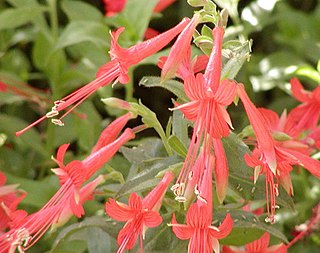
Epilobium canum, also known as California fuchsia or Zauschneria, is a species of willowherb in the evening primrose family (Onagraceae). It is native to dry slopes and in chaparral of western North America, especially California. It is a perennial plant, notable for the profusion of bright scarlet flowers in late summer and autumn.

Leonhart Fuchs[ˈfʊks], sometimes spelled Leonhard Fuchs, was a German physician and botanist. His chief notability is as the author of a large book about plants and their uses as medicines, i.e. a herbal. It was first published in 1542 in Latin. It has about 500 accurate and detailed drawings of plants, which were printed from woodcuts. The drawings are the book's most notable advance on its predecessors. Although drawings were in use beforehand in other herbal books, Fuchs' herbal book proved and emphasized high-quality drawings as the most telling way to specify what a plant name stands for.
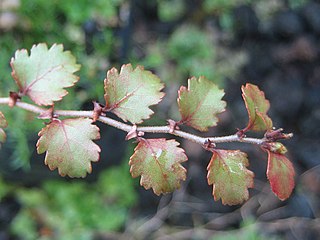
The Antarctic flora is a distinct community of vascular plants which evolved millions of years ago on the supercontinent of Gondwana. It is now found on several separate areas of the Southern Hemisphere, including southern South America, southernmost Africa, New Zealand, Australia and New Caledonia. Joseph Dalton Hooker was the first to notice similarities in the flora and speculated that Antarctica had served as either a source or a transitional point, and that land masses now separated might formerly have been adjacent.
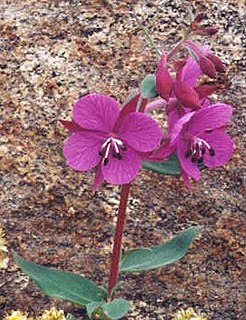
The Onagraceae are a family of flowering plants known as the willowherb family or evening primrose family. They include about 650 species of herbs, shrubs, and trees in 17 genera. The family is widespread, occurring on every continent from boreal to tropical regions.

The Regional Parks Botanic Garden is a 10-acre botanical garden located in Tilden Regional Park in the Berkeley Hills, east of Berkeley, California, in the United States. It showcases California native plants, and is open to the public in daylight hours every day of the year except New Year's Day, Thanksgiving, and Christmas.

The University of California Botanical Garden is a 34-acre botanical garden located on the University of California, Berkeley campus, in Strawberry Canyon. The Garden is in the Berkeley Hills, inside the city boundary of Oakland, with views overlooking the San Francisco Bay. It is one of the most diverse plant collections in the United States, and famous for its large number of rare and endangered species.
Fuchsia is a plant species in the genus Fuchsia.
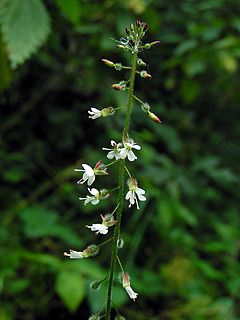
The genus Circaea contains 7–10 species of flowering plants, known as enchanter's nightshade, in the willowherb family, Onagraceae. They are woodland plants occurring in temperate regions of the Northern Hemisphere with one species, alpine enchanter's nightshade being widespread throughout the Northern Hemisphere. The broad-leaved enchanter's nightshade is found in Eurasia and the eastern enchanter’s nightshade is found in North America. In addition, there is an intermediate hybrid between these two, and several local species or subspecies, with between eight and 14 forms recognised by different authorities. The hybrid is sterile, persisting only by vegetative reproduction and not producing seeds.

Fuchsia excorticata, commonly known as tree fuchsia, New Zealand fuchsia and by its Māori name kōtukutuku, is a New Zealand native tree belonging to the family Onagraceae. It is commonly found throughout New Zealand and as far south as the Auckland Islands. It grows from sea level up to about 1,000 m (3,300 ft), particularly alongside creeks and rivers. It is easily recognised in its native environment by the characteristic appearance of its bark, which peels spontaneously, hanging in red papery strips to show a pale bark underneath. Its scientific name, excorticata, reflects this distinctive property.

Fuchsia magellanica, commonly known as the hummingbird fuchsia or hardy fuchsia, is a species of flowering plant in the family Evening Primrose family, native to the lower Southern Cone of southern South America.

Alice Eastwood was a Canadian American botanist. She is credited with building the botanical collection at the California Academy of Sciences, in San Francisco. She published over 310 scientific articles and authored 395 land plant species names, the fourth-highest number of such names authored by any female scientist. There are seventeen currently recognized species named for her, as well as the genera Eastwoodia and Aliciella.

Ribes menziesii, the canyon gooseberry, is a species of currant found only in California and Oregon. There are five to six varieties of the species found across the low elevation mountains of California, especially the Coast Ranges, and the coastal canyons and foothills, into southern Oregon. It can be found in the chaparral plant community.
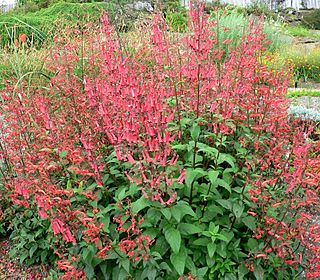
Phygelius, common names Cape fuchsia or Cape figwort, is a genus of flowering plants in the family Scrophulariaceae, native to wet slopes and banks in southern Africa. They are evergreen shrubs often treated as perennials in colder climates. They bear many pendent tubular flowers over a long period in summer, in shades of white, yellow and red. The vague similarity of the blooms to fuchsias has led to the common name Cape fuchsia, though they are not closely related.
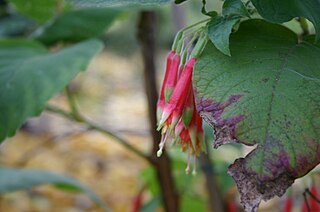
Fuchsia campii is a shrub in the family Onagraceae endemic to the south Andes of Ecuador, where its habitat is threatened. Its natural habitat is on rainy, humid mountain slopes in forests areas lying amid grasslands, sometimes seen growing alongside streams and roads. The species was described botanically in 1995 by Paul Edward Berry.
Fuchsia orientalis is a species of plant in the Onagraceae family. It is endemic to Ecuador.

The Chilean Matorral (NT1201) is a terrestrial ecoregion of central Chile, located on the west coast of South America. It is in the Mediterranean forests, woodlands, and scrub biome, part of the Neotropic ecozone.

Fuchsia triphylla is one of over 110 species that comprise the genus Fuchsia. Due to its attractiveness and its extensive blooming period which spans from early spring to late autumn, the plant has found a major role as a popular species to breed. This has a resulted in an extensive breed of cultivars allowing it to grow in various settings around the world. The visually appealing flowers of the Fuchsia triphylla have contributed to some of the most elegant Fuchsia hybrids produced today.

Ribes speciosum is a species of flowering plant in the family Grossulariaceae, which includes the edible currants and gooseberries. It is a spiny deciduous shrub with spring-flowering, elongate red flowers that resemble fuchsias, though it is not closely related. Its common names are fuchsia-flowered gooseberry and Californian fuchsia. It is native to central and southern California and Baja California, where it grows in the scrub and chaparral of the coastal mountain ranges.

Aculops fuchsiae, commonly known as fuchsia gall mite, is a species of mite in the family Eriophyidae. It feeds on Fuchsia plants, causing distortion of growing shoots and flowers. It is regarded as a horticultural pest.

















